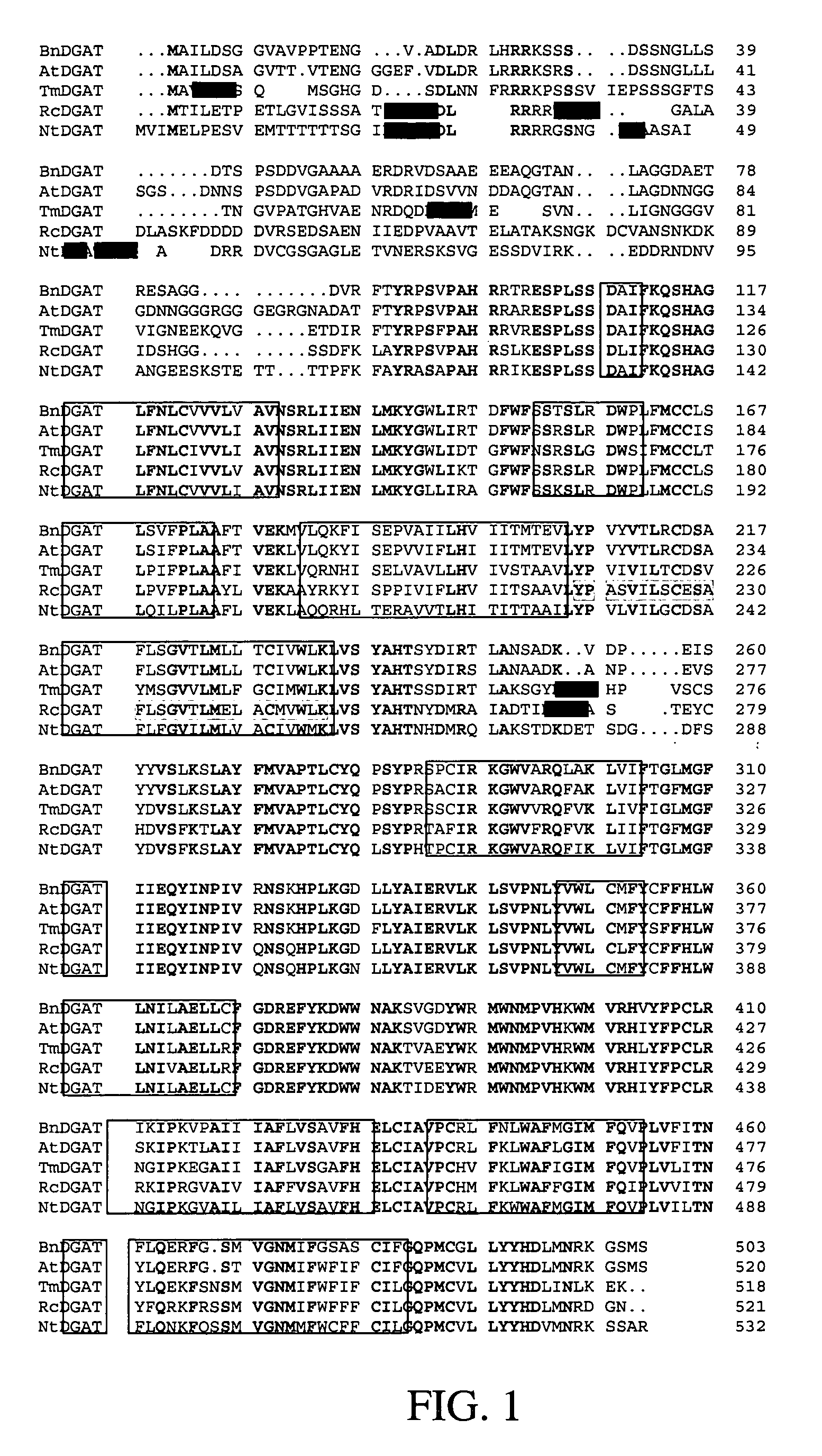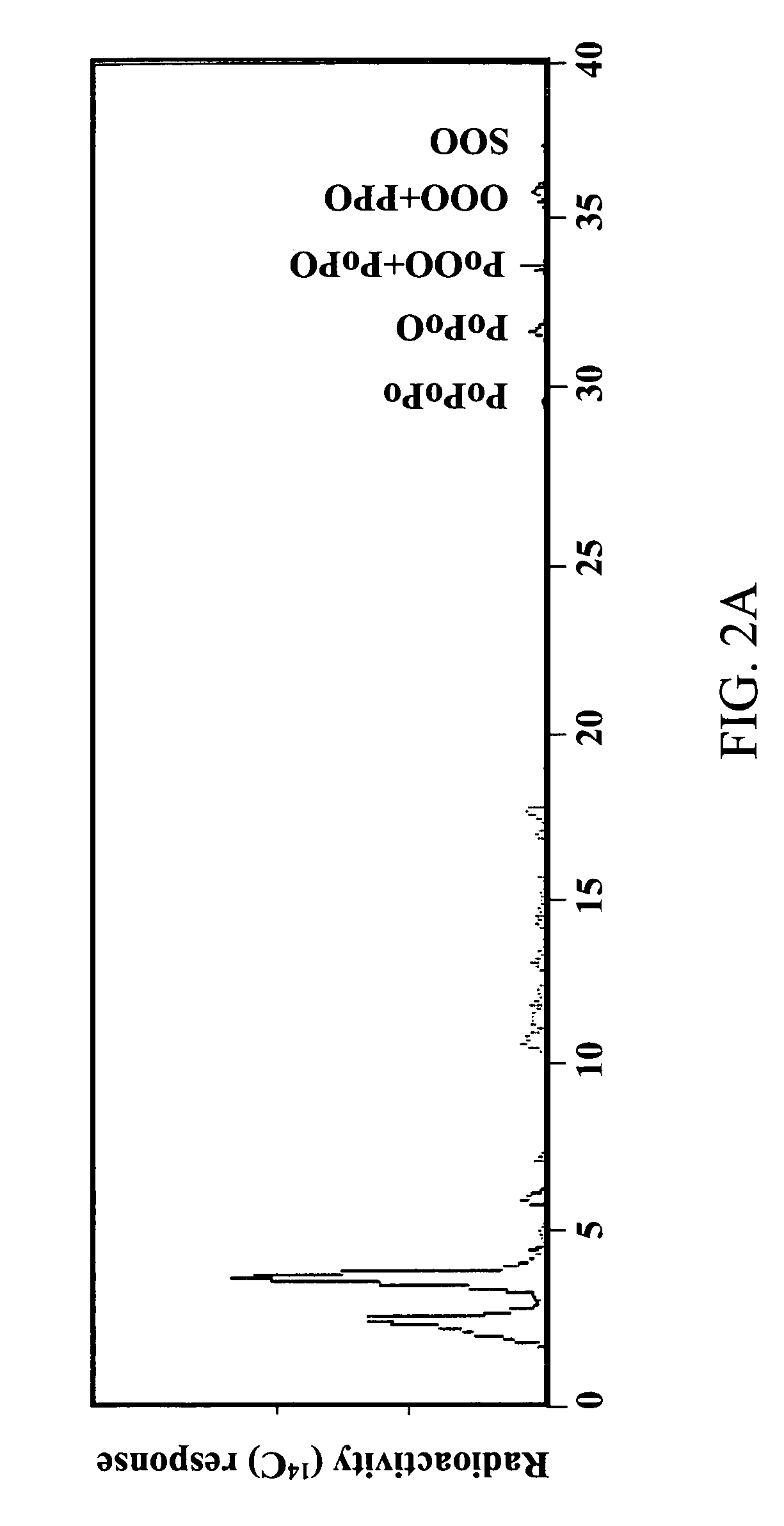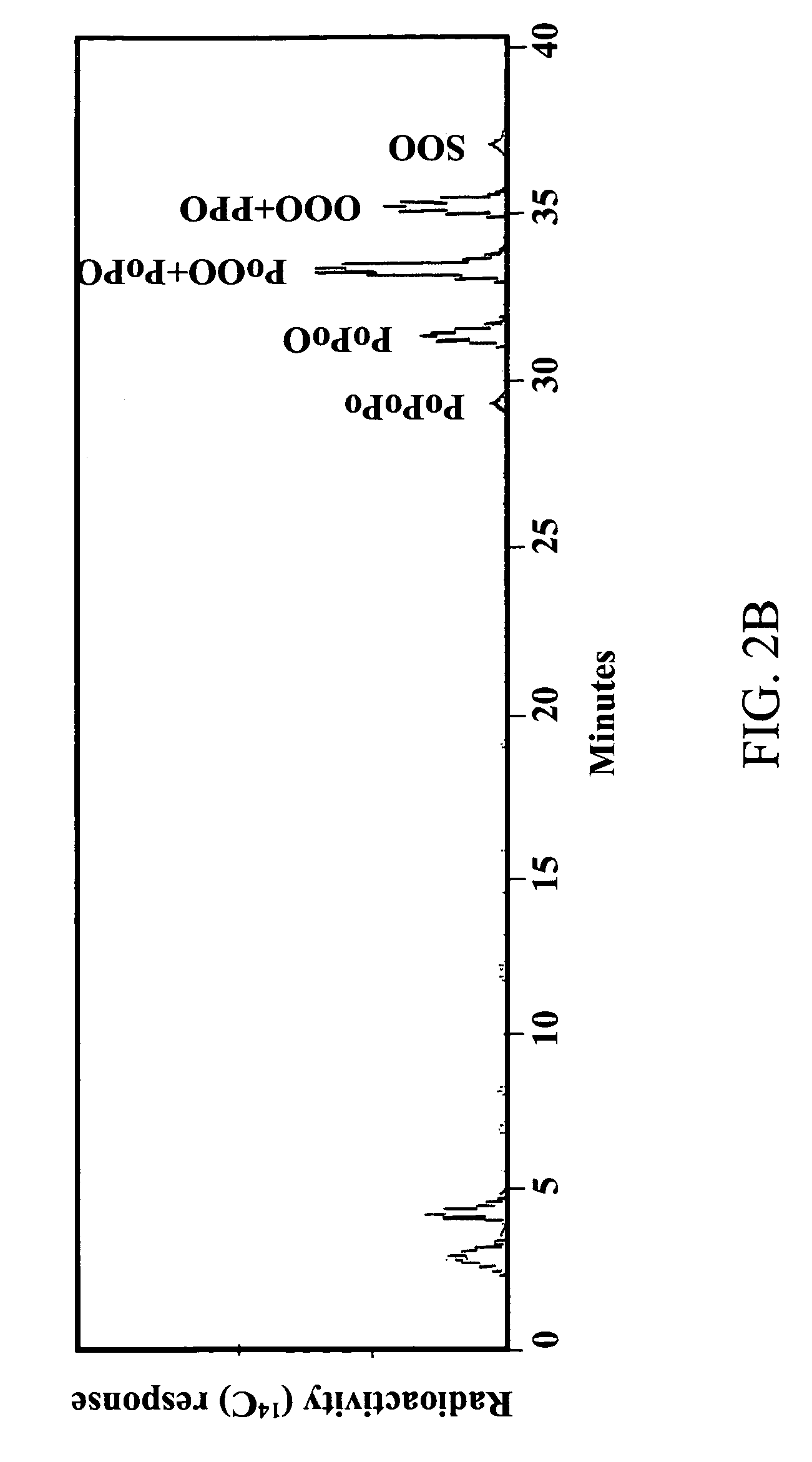Diacylglycerol acyltransferase and its use to preferentially incorporate fatty acids into diacylglycerol
a technology of diacylglycerol and acyltransferase, which is applied in the direction of transferases, organic chemistry, enzymology, etc., can solve problems such as the rate limitation factor, and achieve the effect of expanding the types of fatty acids and reducing health risks for agricultural and industrial workers
- Summary
- Abstract
- Description
- Claims
- Application Information
AI Technical Summary
Benefits of technology
Problems solved by technology
Method used
Image
Examples
Embodiment Construction
[0058]Castor oil is extremely viscous and is an excellent source for biodegradable lubricants and greases. Unfortunately, extracting castor oil from the castor plant (Ricinus communis) is problematic because the plant also contains the toxin ricin as well as various allergens which can be quite harmful.
[0059]The favorable properties of castor oil are due to the presence of ricinoleate, which is the salt form of ricinoleic acid, a hydroxy fatty acid that comprises approximately 90% of the fatty acid composition in castor oil. Like most mono-unsaturated fatty acids, the double bond in the hydrocarbon chain of ricinoleic acid occurs between the 9th and 10th carbon atom on the chain. What imparts the unique physical and chemical properties to ricinoleic acid is a hydroxyl group (—OH) on the 12th carbon of the molecule. This results in enhanced viscosity of ricinoleate-containing oils.
[0060]Little is known about the mechanisms responsible for the high amounts of ricinoleate in castor oil...
PUM
| Property | Measurement | Unit |
|---|---|---|
| molecular mass | aaaaa | aaaaa |
| temperature | aaaaa | aaaaa |
| amphiphilic | aaaaa | aaaaa |
Abstract
Description
Claims
Application Information
 Login to View More
Login to View More - R&D
- Intellectual Property
- Life Sciences
- Materials
- Tech Scout
- Unparalleled Data Quality
- Higher Quality Content
- 60% Fewer Hallucinations
Browse by: Latest US Patents, China's latest patents, Technical Efficacy Thesaurus, Application Domain, Technology Topic, Popular Technical Reports.
© 2025 PatSnap. All rights reserved.Legal|Privacy policy|Modern Slavery Act Transparency Statement|Sitemap|About US| Contact US: help@patsnap.com



